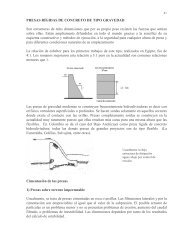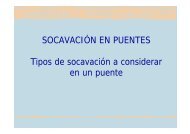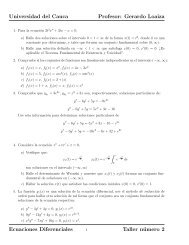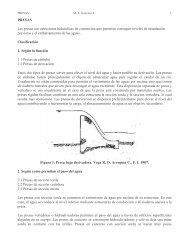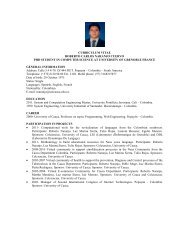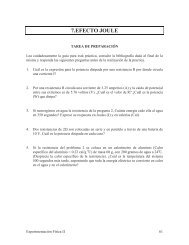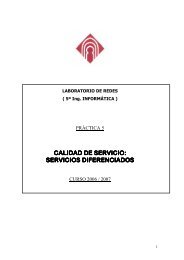Advice for the Project Management Professional (PMP)
Advice for the Project Management Professional (PMP)
Advice for the Project Management Professional (PMP)
Create successful ePaper yourself
Turn your PDF publications into a flip-book with our unique Google optimized e-Paper software.
Licensed to:<br />
352<br />
Appendix A<br />
FIGURE A-26 Time File with Durations Entered<br />
Establishing Task Dependencies<br />
To use <strong>Project</strong> 2007 to adjust schedules automatically and to do critical path analysis, you<br />
must determine <strong>the</strong> dependencies or relationships among tasks. <strong>Project</strong> 2007 provides<br />
three methods <strong>for</strong> creating task dependencies: using <strong>the</strong> Link Tasks button, using <strong>the</strong> Predecessors<br />
column of <strong>the</strong> Entry table or <strong>the</strong> Predecessors tab in <strong>the</strong> Task In<strong>for</strong>mation dialog<br />
box, or clicking and dragging <strong>the</strong> Gantt chart symbols <strong>for</strong> tasks with dependencies.<br />
To create dependencies using <strong>the</strong> Link Tasks button, highlight tasks that are related<br />
and <strong>the</strong>n click <strong>the</strong> Link Tasks button on <strong>the</strong> toolbar. For example, to create a finish-tostart<br />
dependency between Task 1 and Task 2, click any cell in row 1, drag down to row 2,<br />
and <strong>the</strong>n click <strong>the</strong> Link Tasks button. The default type of link is finish-to-start. In <strong>the</strong><br />
<strong>Project</strong> Tracking Database example, all <strong>the</strong> tasks use this default relationship. You will learn<br />
about o<strong>the</strong>r types of dependencies later in this appendix.<br />
TIP<br />
Selecting tasks is similar to selecting cells in Excel. To select adjacent tasks, click and drag <strong>the</strong> mouse.<br />
You can also click <strong>the</strong> first task, hold down <strong>the</strong> Shift key, and <strong>the</strong>n click <strong>the</strong> last task. To select nonadjacent<br />
tasks, hold down <strong>the</strong> Control (Ctrl) key as you click tasks in order of <strong>the</strong>ir dependencies.<br />
When you use <strong>the</strong> Predecessors column of <strong>the</strong> Entry table to create dependencies, you<br />
must manually enter <strong>the</strong> in<strong>for</strong>mation. To create dependencies manually, type <strong>the</strong> task row<br />
number of <strong>the</strong> preceding task in <strong>the</strong> Predecessors column of <strong>the</strong> Entry table. For<br />
example, Task 3 in Table A-3 has Task 2 as a predecessor, which can be entered in <strong>the</strong> Predecessors<br />
column, meaning that Task 3 cannot start until Task 2 is finished. To see <strong>the</strong> Predecessors<br />
column of <strong>the</strong> Entry table, move <strong>the</strong> split bar to <strong>the</strong> right. You can also doubleclick<br />
on <strong>the</strong> task, click <strong>the</strong> Predecessors tab in <strong>the</strong> Task In<strong>for</strong>mation dialog box, and enter<br />
<strong>the</strong> predecessors <strong>the</strong>re. (This is more work than just typing it in <strong>the</strong> Predecessor column.)<br />
You can also create task dependencies by clicking <strong>the</strong> Gantt chart symbol <strong>for</strong> a task and<br />
<strong>the</strong>n dragging to <strong>the</strong> Gantt chart symbol <strong>for</strong> a task that succeeds it. For example, you could<br />
Copyright 2009 Cengage Learning. All Rights Reserved.<br />
May not be copied, scanned, or duplicated, in whole or in part.



